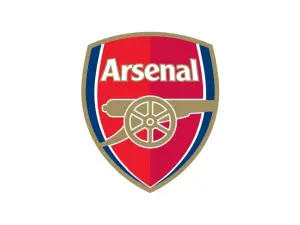How well do you know Arsenal?
Arsenal FC, based in Islington, London, stands as one of the most iconic football clubs with a rich history that has shaped the landscape of English football. Founded in 1886, Arsenal has become synonymous with success, rivalry, and a commitment to attractive, attacking football. Here, we delve into the legacy and impact of this historic football club.
Historical Foundations
Arsenal’s journey began in the south-east of London, in the working-class area of Woolwich, where it was initially established as Dial Square. The club’s name evolved over the years, and in 1913, it moved to its current home, Highbury Stadium. This relocation marked the beginning of a new era for Arsenal.
Golden Years under Herbert Chapman
Arsenal rose to prominence during the 1930s, largely due to the managerial brilliance of Herbert Chapman. Under Chapman’s guidance, the club won its first major honors, including the First Division titles in 1931 and 1933. Chapman’s tactical innovations and emphasis on physical fitness set the foundation for Arsenal’s future success.
Arsène Wenger Era
The modern era of Arsenal is indelibly linked with the tenure of Arsène Wenger. Appointed in 1996, Wenger revolutionized English football with his emphasis on sports science, nutrition, and a style of play that became known as “Wengerball.” The Frenchman led Arsenal to unprecedented success, including three Premier League titles and four FA Cups.
Notably, Wenger’s “Invincibles” of the 2003-2004 season achieved the remarkable feat of going through the entire league campaign unbeaten. It showed a testament to the team’s resilience and quality.
Iconic Moments and Rivalries of Arsenal FC
Arsenal has been part of numerous iconic moments in football history. The “Anfield ’89” match, where Michael Thomas’s late goal secured the league title, is etched in the memories of Arsenal fans. The club’s rivalry with Manchester United, often epitomized by clashes between Wenger and Sir Alex Ferguson, added intensity to English football during the late 1990s and early 2000s.
The North London Derby against Tottenham Hotspur is another fixture that captures the imagination of football enthusiasts, as the battles between these two local rivals are always fiercely contested.
Transition to the Emirates Stadium
Then, in 2006, Arsenal moved to the state-of-the-art Emirates Stadium, bidding farewell to Highbury. The new stadium provided increased capacity and modern facilities, signifying Arsenal’s commitment to remaining competitive at the highest level.
Challenges and Recent Developments
In recent years, Arsenal has faced challenges on the field, undergoing managerial changes and striving to reclaim its former glory. The appointment of Mikel Arteta as manager has brought a renewed sense of optimism. It came with an emphasis on youth development and tactical discipline.
The emergence of young talents like Bukayo Saka and Emile Smith Rowe showcases Arsenal’s commitment to nurturing talent from its academy. The club is also investing in analytics and data-driven decision-making to stay at the forefront of football innovation.
Global Fanbase and Community Engagement
Beyond the pitch, Arsenal boasts a vast global fanbase. The club’s outreach extends beyond football through various community engagement programs, emphasizing inclusivity and making a positive impact on society.
In conclusion, Arsenal FC’s legacy is woven into the fabric of English football, with a history marked by success, innovation, and a commitment to attractive football. As the club navigates the challenges of the modern game, the indomitable spirit of the Gunners continues to resonate with fans worldwide. It ensures that Arsenal’s impact on football history endures.
Try our Arsenal FC quiz and see how many you can get correct out of 10.
Challenge your friends and see who is the champion.







